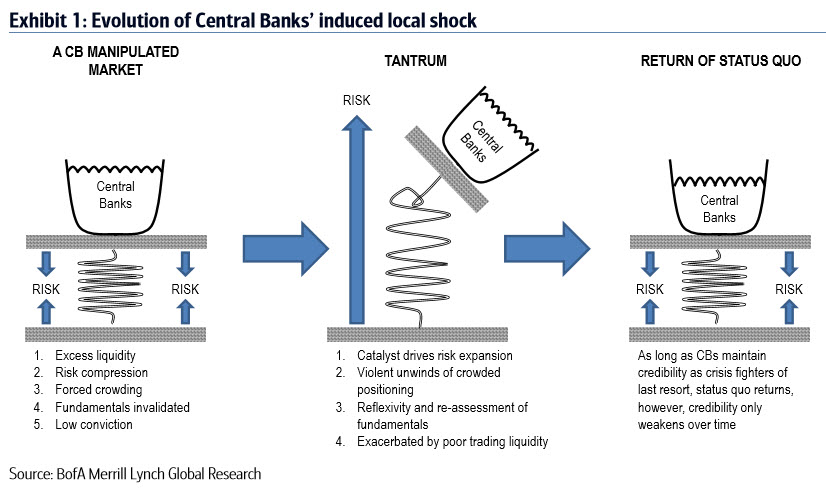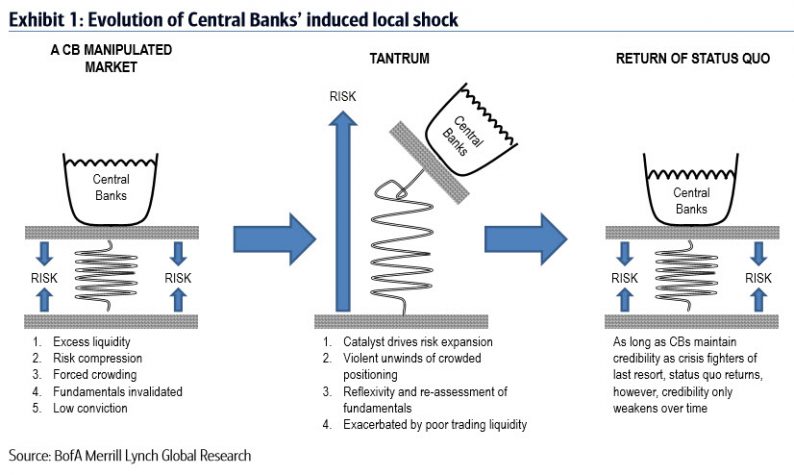Stephen Roach is worried that the Fed has set the world up for another financial market meltdown.
Lower for longer rates and the proliferation of unconventional monetary policy have created “a breeding ground for asset bubbles, credit bubbles, and all-too frequent crises, so the Fed is really a part of the problem of financial instability rather than trying to provide a sense of calm in an otherwise unstable world,” Roach told Bloomberg TV in an interview conducted a little over a week ago.
To be sure, Roach’s sentiments have become par for the proverbial course. That is, it may have taken everyone a while (as in five years or so) to come to the conclusion we reached long ago, namely that central banks are setting the world up for a crisis that will make 2008 look like a walk in the park, but most of the “very serious” people are now getting concerned. Take BofAML for instance, who, in a note we outlined on Wednesday, demonstrated the prevailing dynamic with the following useful graphic:

Perhaps Jeremy Grantham put it best: “..in the Greenspan/ Bernanke/Yellen Era, the Fed historically did not stop its asset price pushing until fully- fledged bubbles had occurred, as they did in U.S. growth stocks in 2000 and in U.S. housing in 2006.”
Indeed. It’s with that in mind that we bring you the following excerpts from a new piece by Roach in which the former Morgan Stanley chief economist and Yale fellow recounts the evolution of the Fed and how the FOMC ultimately became “beholden to the monster it had created”.
From “The Perils of Fed Gradualism” as posted at Project Syndicate
By now, it’s an all-too-familiar drill. After an extended period of extraordinary monetary accommodation, the US Federal Reserve has begun the long march back to normalization.
A majority of financial market participants applaud this strategy. In fact, it is a dangerous mistake. The Fed is borrowing a page from the script of its last normalization campaign – the incremental rate hikes of 2004-2006 that followed the extraordinary accommodation of 2001-2003. Just as that earlier gradualism set the stage for a devastating financial crisis and a horrific recession in 2008-2009, there is mounting risk of yet another accident on what promises to be an even longer road to normalization.









Leave A Comment